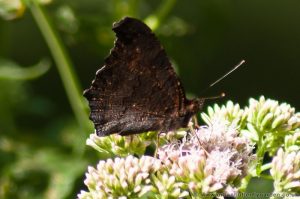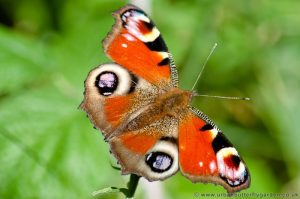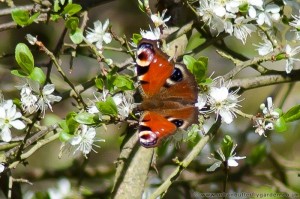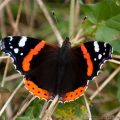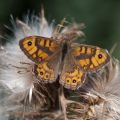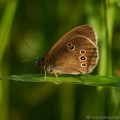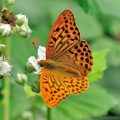Peacock Butterfly (Inachis io)
Possibly the most striking and well known of all British Butterflies, the Peacock with its red velvet colours and bright distinctive eye-spots, can often be seen in gardens, mid to late summer often attracted by plants and shrubs like Rudbekia and Buddleia.
As well as being a garden visitor, Peacock butterflies can be found in a broad range of habitats from woodland clearings to urban parks and waste ground, where they may be seen around plants and shrubs like, Blackthorn, Bramble Flowers and Hemp Agrimony or just bathing in warm sunshine.
Quick Info
- Family Group: Nymphalidae – Browns
- Subgroup: Nymphalinae.
- Wingspan: Around 60mm.
- Habitat: Gardens, Open woodland clearings, Urban parks, Waste ground, and others
- Adult Nectar Plant: Blackthorn, Bramble, Buddleia, Common Ragwort, Hemp Agrimony, Rudbekia, Teasels, and others.
- Caterpillars feed on: only Common Nettles (Urtica dioica).
- Photographs: Top – Peacock butterfly 15/8/10, – Left – Peacock showing dark Under-Wings 24th July- bottom right – Peacock in Spring 9th April
The Peacock Butterfly hibernates through the winter months, in places like old tree trunks out buildings and wood stacks, emerging around March – April although on occasions they may be seen earlier.
The Upper-Wings are red-brown velvet coloured with bold and distinctive eye-spots especially on the hind-wings, the eye-spots, on tips are less bold.
The Under-Wings are dark brown or black.

